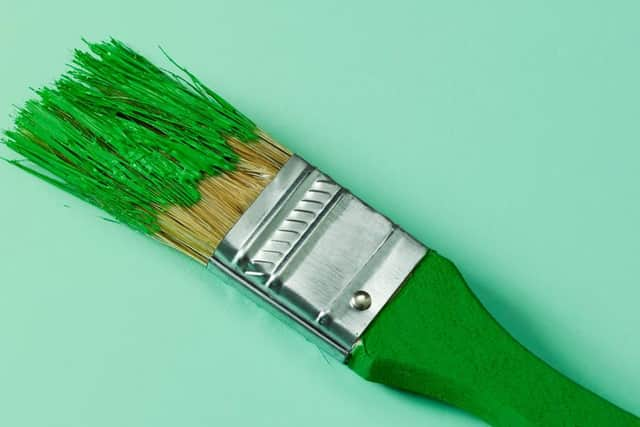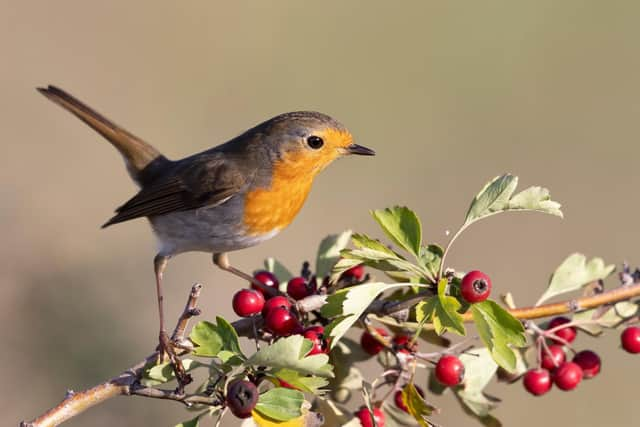Enjoying your best tipple while you still green the planet


Q: How can I be environmentally friendly when it comes to having a drink or two?
We might be midway through dry January, but this is a question I get asked a lot. There are two ways to answer this question, the first is to think about mileage – in the same way that seasonal eating reduces food miles because you’re eating what’s produced on your doorstep, so does local drinking, and I don’t mean going to your pub around the corner.
Advertisement
Hide AdAdvertisement
Hide AdMost counties in the UK have local breweries, whether they’re on a bigger or microbrewery scale so have a look at what’s being produced on your doorstep. There are the more obvious ones – like cider breweries in Somerset and whisky producers in the Highlands but Cornwall has gin producers, and the midlands has cider so research what you have locally, not only will you be reducing food miles – the distance your drink needs to travel to get to you – but you’ll also be helping out our economy too.


The next way to drink in an eco-friendly fashion is to support the bigger producers that have initiatives to help the environment and there are plenty of these.
Absolut Vodka uses carbon neutral facilities and is aiming for zero emissions, zero waste and 100 per cent recycling by 2040.
Bacardi operate an initiative called ‘Good Spirited: Building a Sustainable Future’. They’ve helped reduce their carbon emissions by 90 per cent and they’ve pledged to stop using plastic all together by 2030.
Advertisement
Hide AdAdvertisement
Hide AdBombay Gin have won industry awards for their approach to sustainability. They use a biomass boiler that uses by-products of their production process to power their distillery and are partially powered by hydro energy, which is renewable.


Glengoyne Whisky in Killearn north of Glasgow is powered by renewable energy and it’s partnered with the Wildfowl and Wetlands Trust and are supporting their WWT Can! Campaign to create an additional 100k hectares of wetlands across the UK.
The Discarded Spirits company make vermouth, rum and vodka using waste ingredients from used banana skins to discarded grape skins from wine production.
Sapling Spirits pledge to plant a tree for every bottle sold. Each bottle lists a unique scannable code which tells you what tree was planted and where it lives. The company have planted over 89,000 trees from fruit trees in London to oak trees in Bristol.
Advertisement
Hide AdAdvertisement
Hide AdAnheser-Busch InBev own brands including Budweiser, Stella Artois and Corona, they’ve pledged to be powered entirely by renewable energy by 2025 with Budweiser already entirely brewed using renewable sources of energy.


There are plenty of ways to enjoy your favourite tipple and help the global and local environment too. I’ll happily raise my glass to that.
Celebrity spot
It might be a decade since she narrated ‘A Fierce Green Fire: The Battle For A Living Planet’ but Meryl Streep (photo: Getty) says her passion for protecting the environment started when she had her first child in 1979.
"It all goes back to being a mother.
“That’s the most invested relationship you have.
“You pay attention, perhaps for the first time.
“What is going in your child’s mouth?
“What’s her environment like?
“What will the future be?”
Green swap
January is often the time of year we think about giving our homes a spruce up for a brand-new year. Whether it’s the hallway or the bedroom, if you’re repainting, swap regular paint containing volatile organic compounds for eco-friendly (photo: Adobe).
Preparing your garden for warmer spring days
Advertisement
Hide AdAdvertisement
Hide AdWe’re entering the coldest part of the year so far, having had snow already in parts of the country, balmy 40C days of summer feeling like a distant memory.
But while we’re all braced for the toughest part of winter to come, the good news is that spring is just around the corner.
Now’s the time to start thinking about how you can help nature in your garden get through the last months of cold before animals start to nest and think about breeding.
Prepare your garden properly and, before you know it, your outside space will be awash with birdsong and nature in all its glory.
Advertisement
Hide AdAdvertisement
Hide AdFirstly, don’t be too neat. Nature doesn’t conform to tidy lines so a bit of disorder will encourage things in. Birds, insects and amphibians need leaf litter and areas of dead vegetation so don’t feel the need to neaten and sweep everything up.
It might sound obvious but don’t use weedkillers or sprays. They’re almost all chemical and can harm nature.
Next, whether it’s an actual bird bath or a bucket of water, have something in your garden birds can drink out of and bugs can make use of.
If you’re thinking about getting a bird feeder make sure it’s out of the way of the local cats, harder said than done sometimes. But planting it where cats can’t easily stalk prey will give your visiting birds a fighting chance.
Advertisement
Hide AdAdvertisement
Hide AdTry to recreate layers of growth. If you head to your local woods, as well as the trees you’ll see bushes and ground plants and ivy. These layers are important for birds to hide in, nest in and protect their territory.
If you plan to plant trees or shrubs – and don’t mind the birds eating the hard earned fruits of your labour – cherry trees and black berry bushes will give them a high-calorie boost close to home, which is vital when they’re rearing chicks.
Other bird friendly plants include hawthorn, rowan, holly, ivy and honeysuckle. Similarly, if your budget can stretch then a bird box will attract birds, you might have to be patient but they’ll eventually come.
You can make easy bird feeders by dipping pine cones into melted fat and rolling them in seeds.
Advertisement
Hide AdAdvertisement
Hide AdOr use a couple of old cups and melt fat – leftover oil from the Christmas roast for example – and mix in nuts and seeds before pouring into your old cups, leaving them to set then hang them from trees.
The Woodland Trust (www.woodlandtrust.org.uk) has plenty of ideas on how to encourage nature to bloom in your garden.
So, whether you have an extensive lawn, terrace or balcony, there are ways you can bring nature right onto your doorstep.
Doing it now will mean your local birds are familiar with the changes before breeding season starts in earnest.
Fact or fiction
Advertisement
Hide AdAdvertisement
Hide AdElectric cars can be powered by crustaceans? Fact. New study from the University of Maryland has found chitin, a by-product of shells from creatures like crabs and lobsters, could be used as a sustainable source of energy.